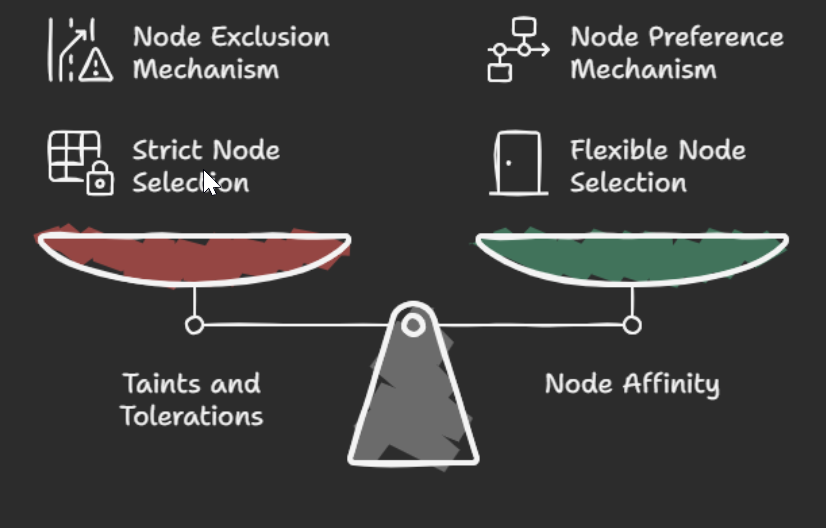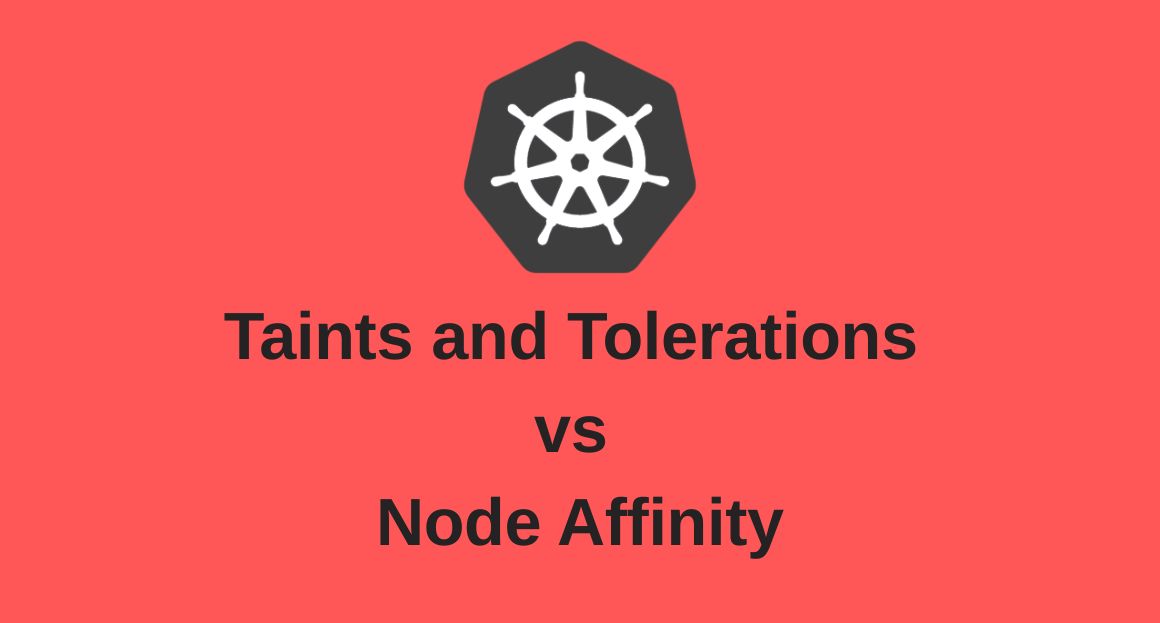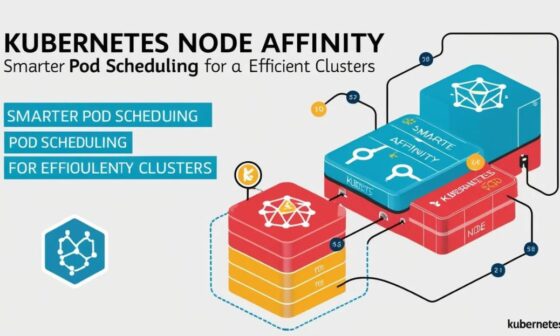Kubernetes, a powerful container orchestration platform, provides mechanisms for controlling how pods are scheduled onto nodes. Two pivotal features stand out among these mechanisms: Taints and Tolerations, and Node Affinity. Although they serve related purposes, their applications and operational behaviors differ significantly.
Understanding Taints and Tolerations
Taints are applied to nodes to repel pods from scheduling unless the pods explicitly tolerate these taints. A node marked with a taint will refuse pods unless they have a corresponding toleration. This approach helps reserve nodes for specific workloads or ensures sensitive workloads avoid particular ones.
Example Use Case:
- Marking certain nodes for exclusive use by critical applications.
- Keeping infrastructure nodes free from regular workloads.
Example Taint and Toleration:
# Node Taint
kubectl taint nodes node1 key=value:NoSchedule
# Pod Toleration
spec:
tolerations:
- key: "key"
operator: "Equal"
value: "value"
effect: "NoSchedule"
Understanding Node Affinity
Node Affinity is a scheduling feature that allows pods to express preferences for nodes based on labels. Unlike taints and tolerations, node affinity doesn’t repel pods; instead, it attracts or prefers certain nodes.
Node affinity comes in two types:
- RequiredDuringSchedulingIgnoredDuringExecution: Pods must meet these conditions at scheduling.
- PreferredDuringSchedulingIgnoredDuringExecution: Pods prefer nodes meeting these conditions but can be scheduled elsewhere if necessary.
Example Node Affinity:
spec:
affinity:
nodeAffinity:
requiredDuringSchedulingIgnoredDuringExecution:
nodeSelectorTerms:
- matchExpressions:
- key: disktype
operator: In
values:
- ssdKey Differences Between Taints and Tolerations vs Node Affinity
| Aspect | Taints and Tolerations | Node Affinity |
|---|---|---|
| Operational Principle | Repels pods unless tolerated | Attracts pods based on node labels |
| Node Configuration | Applied directly on nodes | Uses node labels, not direct node changes |
| Pod Configuration | Requires explicit tolerations | Expressed via affinity rules |
| Flexibility | Less flexible, more restrictive | More flexible, preference-based |
| Typical Use Cases | Exclusive workloads, critical nodes | Optimizing resource usage |
When to Use Which?
- Use Taints and Tolerations when:
- Enforcing strict scheduling restrictions.
- Keeping specific nodes reserved or protected from general workloads.
- Use Node Affinity when:
- Optimizing resource usage.
- Influencing scheduling preferences rather than enforcing hard rules.
Combining Both for Optimal Control
Often, the best practice involves using both mechanisms in tandem:
- Taints and tolerations ensure that nodes have strict scheduling constraints.
- Node affinity further optimizes workload distribution and resource utilization.
By effectively leveraging taints/tolerations and node affinity, Kubernetes administrators can achieve highly refined control over resource allocation, workload management, and operational efficiency.






